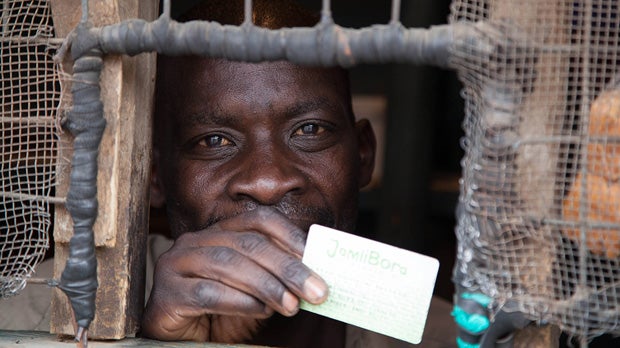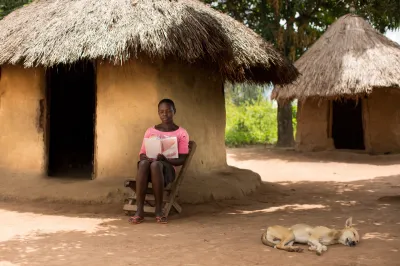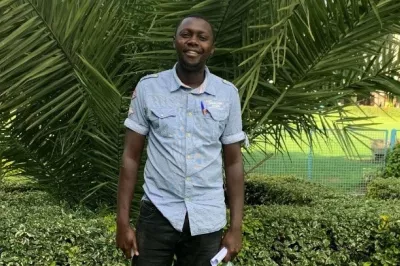Who Are Kenya’s Financially Excluded?
The recent 2017 Finscope Tanzania report shows that while mobile money use in Tanzania continues to grow, the percentage of financially excluded adults has risen in parallel — from 27 percent in 2013 to 28 percent in 2017. After a decade of significant declines in financial exclusion, these new numbers raise the question of whether the strongest mobile money markets, such as those in East Africa, might be reaching a plateau in financial access.

Perhaps the best bellwether is Kenya, where over 70 percent of adults have mobile money accounts. With a majority of people connected to mobile money, Kenya’s financial services and development organizations have increasingly refocused their efforts away from financial access and toward improving account use. This move is perhaps not without good reason. As more people gain access to mobile money, the question of how it can be used to improve the lives of the poor becomes more critical. The development of products like digital investment, credit and savings are essential for moving low-income customers from basic transaction accounts to services that meet financial inclusion’s broader promise of lifting people out of poverty.
But what about those people who are still outside the bounds of financial services today? Based on the 2016 FinAccess survey, 17 percent of Kenyan adults remain fully excluded — meaning they do not have a bank account, use another formal product like mobile money, or even use an informal mechanism like a savings collective. In a country where over 90 percent of the financially excluded population is aware of mobile money, where 67 percent live within walking distance of an access point, and where trust, financial literacy and comfort with technology do not rate as barriers to obtaining an account, why do these people remain outside the financial system?
FinAccess data provide some basic demographic answers to this question. Compared to the included population, Kenya’s financially excluded are more likely to be:
- Rural (80 percent)
- Older (38 percent are over the age of 45)
- Female (55 percent)
- Poor (42 percent are in the lowest wealth quintile)
- Informally employed or dependent (81 percent)
- Lacking formal education (37 percent have no formal education at all)
- Living in a female-headed household (twice as likely as financially included people)
Already with these data points, a picture begins to form of a population segment that may not have enough money to make financial services worthwhile. Other parts of the survey bolster this hypothesis. Ninety-four percent of financially excluded FinAccess survey respondents cite lack of funds as a primary reason for not having an account, and 67 percent say they live easily without formal services. A Kenyan in the bottom wealth quintile is seven times more likely to be excluded than a top earner. Ultimately, wealth is a better predictor of financial exclusion than location, gender, marital status or age.
And yet there is one characteristic that easily beats out wealth: education.
A Kenyan with no formal education is 26 times more likely to be financially excluded than someone at the top of the education ladder. Education in this sense does not refer to technological know-how or financial training, but formal primary, secondary and university education. It may seem surprising that education would weigh more heavily than any other factor in determining the use of financial services, but perhaps it should not. Education often defines livelihood, livelihood defines wealth and wealth, in many cases, defines the need for today’s digital financial services.
These findings imply that expanding access to the last remaining excluded users in countries like Kenya and Tanzania will not be as easy as erecting more cell towers or designing a smoother user experience. Today’s exclusion might not be easily fixed by companies scaling their current financial products in response to customer demand. As best as we can tell, if you aren’t using mobile money in Kenya today, there is a good chance it is because you have little money to manage and believe the product does not dramatically improve your life.
So when it comes to expanding financial access, what can the financial inclusion community do right now alongside long-term efforts to improve access to quality education and boost incomes? The excluded population represents millions of people in these markets, and it is difficult to generalize about their financial needs. But given the insights above, a few more nuanced questions can be asked to better focus our efforts:
- Are there excluded people near a tipping point, who need only slightly better incentives to start using today’s financial services? How can we make today’s products more attractive for them? CGAP research on topics like merchant payments is attempting to answer this question.
- What portion of the excluded population might be covered by government-to-person (G2P) programs, and will these programs provide access to comprehensive financial services? G2P programs may offer a way to connect people who do not have the means to make more traditional services worthwhile to the financial system. However, the channels governments use to deliver many of today’s support payments are viewed by recipients as cash disbursement mechanisms more than financial products. Graduating the products offered through these channels to more comprehensive financial services solutions should also be a part of the conversation.
- For people who neither receive government payments nor have the resources to make today’s financial services worthwhile, what services are necessary to make financial inclusion more appealing? This is the group that David Ferrand of FSD Kenya refers to as the “missing middle” for financial access. How can markets innovate to not just bring existing products closer to the excluded, but adapt those products to make them more relevant for the excluded?
Mobile money has provided an essential on-ramp to financial services for portions of the developing world, especially those in East Africa. We must continue building on these platforms to help lift people out of poverty. But as we do this, it is important to realize that today’s products will not work for everyone. Achieving financial inclusion in the years ahead will require not only applying and building on existing products, but also continuing to innovate to better meet the needs of the excluded.




Comments
Two long neglected points
Two long neglected points are belatedly recognised 1) One size fits for all product approach be it digital or non digital is harmful in financial inclusion mission. 2) What happens after inclusion financially in terms of welfare impact from the use of finance at household level .
Better late thannever
Dr Rengarajan
Will, I am glad to see you
Will, I am glad to see you digging into who the excluded are, but I am curious what real problems you think merchant payments solve for this segment. I personally don’t see it, especially given that the overwhelming majority have no formal income and we already know their retail transactions are teeny-tiny. The quest for value and impact requires that we be putting the question of user need first. If we have to work in reverse, thinking how to make specific financial services relevant, we’ve already lost the battle.
Totally agree. The comment
Totally agree. The comment about merchant payments is referring to those already at a tipping point for adoption. Put another way – customers who look a lot like today’s mobile money users, but for one reason or another have not adopted, may be more likely to adopt as the value proposition is improved. However, my larger point is the same as yours: a much larger percentage of the excluded in a mature MM market like Kenya do not simply need a better bicycle. Rather, we need to rethink how (if at all) financial services can solve the challenges they face.
Thanks very much for this
Thanks very much for this blog Will. You make an important point that the excluded are not homogenous. For those living in remote areas like northern Kenya, access- building more cell towers - may still be significant. For those who are less active economically, the elderly for example, there may be less incentive to use financial devices. For the remainder, you make an important point that the value proposition of financial devices is still weak. At the same time, even were this to be addressed, would it be fair to say that the major barrier is still lack of liquidity (extreme poverty)? If this is the case, then improved financial solutions may not be the answer.
Thanks very much for this
Thanks very much for this blog Will. You make an important point that nomadic rural women. For those living in remote areas like upper eastern Kenya, access- building more cell towers - may still be significant. For those who are less active economically, the elderly for example, there may be less incentive to use financial devices. For the remainder, you make an important point that the value proposition of financial devices is still weak. At the same time, even were this to be addressed, would it be fair to say that the major barrier is still lack of liquidity (extreme poverty)? If this is the case, then improved financial solutions may not be the answer.
Add new comment